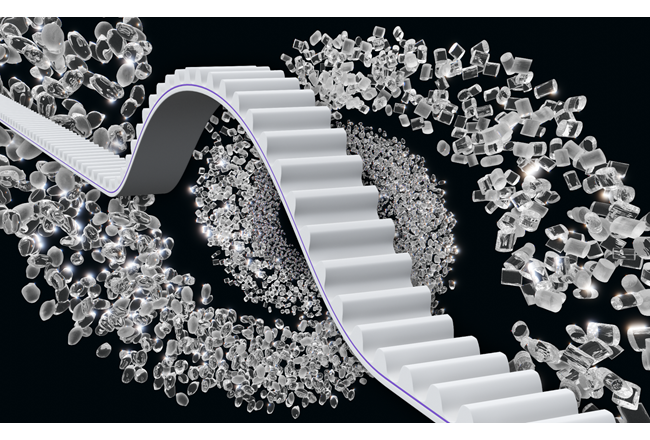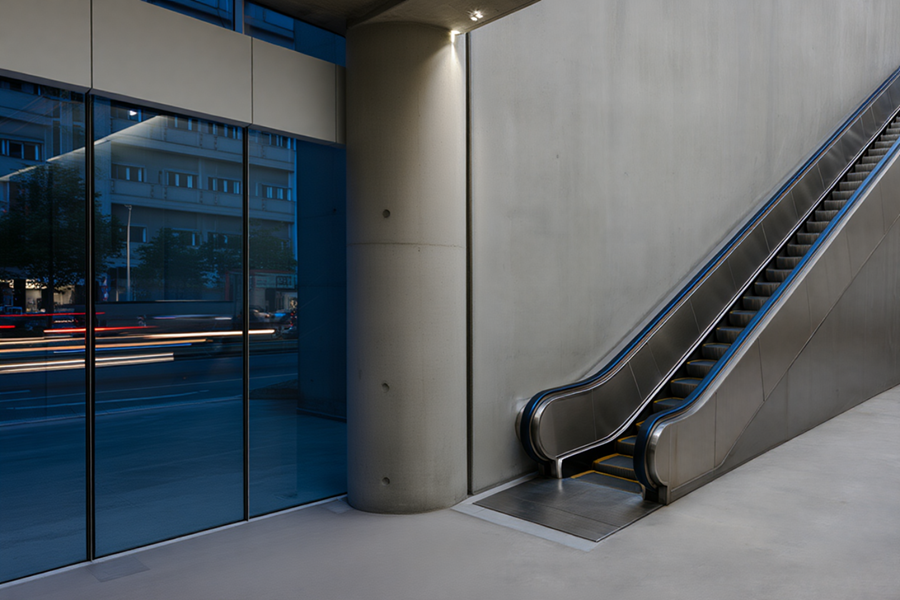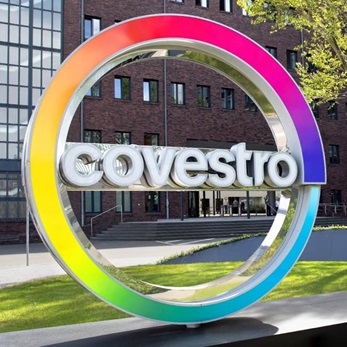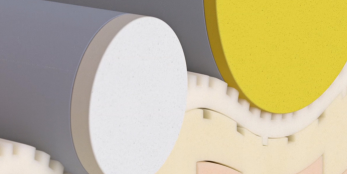
Material evolution: TPU continues to replace rubber in various applications
Durability, productivity and sustainability: TPU sets new standards
As industry requirements evolve, manufacturers are looking for solutions that deliver technical performance alongside economic efficiency and a reduced environmental footprint. TPU answers these demands by combining rubber-like elasticity with higher productivity enabled by thermoplastic processing. The result: a practical, future-proof alternative for both industrial and consumer applications.
The unique versatility of Desmopan® TPU versus rubber
Thermoplastic polyurethanes (TPUs) are multiphase block copolymers with alternating hard and soft segments. This structure allows grades to be tailored for specific hardness, strength, and elasticity needs. Unlike rubber, Desmopan® TPU requires no compounding – offering a complete portfolio with ready-to-use performance.
Its unique architecture combines the flexibility and strength of thermoset rubber with the processing speed and recyclability of thermoplastics. The outcome: improved durability, longer service life, more efficient manufacturing and circularity by design.
Properly formulated TPUs can match or outperform the properties of many rubbers for example based on NR, BR, SBR, NBR, EPDM, IIR, CR, AU/EU, CSM, ECO. Covestro provides the technical expertise to evaluate your rubber application to be successfully replaced by TPU, including material specific part and mold design.
TPU presents a compelling modern alternative to traditional vulcanized rubber across a wide range of applications. Key features when it comes to rubber replacement:
Hardness Range | Rubber: 30 to 90 Shore A vs. TPU: 60 Shore A to 85 Shore D; plasticizer-free
Mechanical Strength | Rubber: Often high tensile strength with low elongation vs. TPU: Combines high tensile strength with high elongation
Abrasion & Wear | Rubber: Medium-high depending on compound vs. TPU: Very high
Freedom of Design | Rubber: Low vs. TPU: High: lightweight design, complex geometries, functional integration
Processing | Rubber: Multi-step process, energy-intensive, long cycle times vs. TPU: Thermoplastic processes: high productivity, high degree of automation
Recyclability | Rubber: Non-recyclable, limited to crumb vs. TPU: Fully recyclable, supports circularity
Sustainability | Rubber: Shorter product life due to higher wearout vs. TPU: Longer product life (footwear outsoles); less maintenance cycles (mining screens)
Health | Rubber: Typical smell vs. TPU: Low VOC; odorless
TPU delivers rubber-like elasticity with superior wear resistance and efficient thermoplastic processing. This makes Desmopan® a reliable and cost-effective choice for a variety of demanding industrial and consumer applications
TPU reaches break-even earlier if considering all cost factors
Comparing the manufacturing process, TPU is processed like other thermoplastics on standard injection molding, extrusion or blow-molding equipment. Unlike rubber, it reduces manual labor, generates less scrap, and requires fewer process stages e.g. compounding and vulcanization. This streamlined thermoplastic approach leads to shorter cycle times, lower energy consumption, and reduced floor-space needs. As a result, TPU often reaches break-even earlier, especially when accounting for throughput, automation, functional integration, and productivity gains.
TPU enables high level of functional integration within components
TPU also enables freedom of design and assembly efficiency that many rubber processes cannot meet. Multi-component parts with a high level of functional integration can be easily produced by co-molding with rigid polymers or over-molding metal parts.
Rubber, in contrast, often requires additional assembly steps with fasteners or adhesives. That ability to combine hard and soft materials in a single production step reduces assembly costs, improves reliability, and opens new opportunities for advanced and multifunctional composites.

Successful replacements today and tomorrow
TPU is already replacing rubber across industries where cost pressure, scalability, and durability are key:
- Industrial manufacturing: hoses, wheels and castors, housing feet, cables, seals, handrails, shock absorbers, conveyor belts and rollers.
- Mining industries: heavy-wear components such as hoses, screen panels, wheels and rollers, wear linings, conveyor belts, pump and cyclone liners.
- Consumer products: outsoles, midsoles and sporting goods.
- Mobility: damping components and pads in railway and automotive applications.

Key benefits
- Higher Productivity: Short cycle times, no vulcanization, low production costs, low break-even
- Durability: High abrasion and chemical resistance, elasticity, longer service life
- Design Flexibility: Broad hardness range, lightweight, co-molding
- Recyclability: Supports circularity and sustainable solutions, enables scrap reuse















